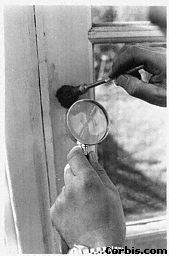
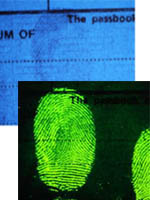
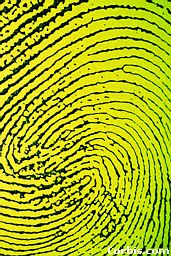
The Scientific analysis of Fingerprints
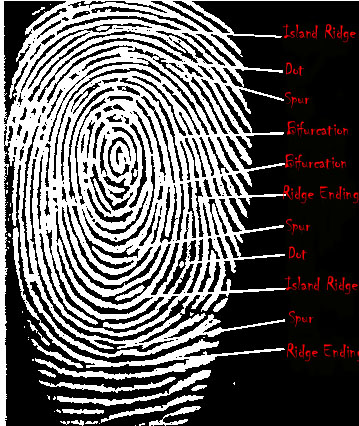
Patterns
Arches
There are two different types of arches: plain or tented. In the Plain Arch Pattern, the ridges enter upon one side, make a rise or wave in the center, and flow out the opposite side. A Tented Arch has an angle, up thrust, or two or three basic characteristics of a loop. Arches have no Delta's. The Delta is the point on a ridge at or nearest the point of divergence of two lines, and located at or directly in front of the point of divergence. The diagram below can better explain the Delta. Where the lines point to, this is a Delta.
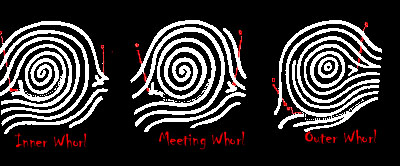
Loops
These are the most common patterns found. A loop must have one and only one Delta and a core. To be a valid Delta there must be a significant recurving line which passes in front of the Delta. Loops not only have one core and one Delta but they also have something called a ridge count. The ridge count is the number of lines intersected if you draw a line from the Delta to the core. The picture below will give you a better understanding of ridge count.
Whorls
A finger print that has 2 or more Delta's will be a whorl. It has one or more ridges, with 2 Delta's and at least one recurving ridge can be found. There are 3 other types of loops: Double loop, Central Pocket Loop Whorl, and Accidental Loop. Double Loop consists of two separate loop formations, with two separate and distinct sets of shoulders and two deltas. A Central Pocket Loop Whorl consists of at least one recurving ridge, or an obstruction at right angles to the line flow, with two deltas, between which an imaginary line can be drawn, and no recurving line within the inner pattern. An Accidental Whorl consists of two different types of patterns with the exception of the plain arch, with two or more Deltas.
Types of Fingerprint Impressions
When Identifying fingerprints at a crime scene you will usually find three types of fingerprint impression: Latent, Patent, and Plastic. Latent Prints appear when the hand touches the surface and some of the moisture is transferred from the hand to the object, leaving behind the impression of a friction ridge detail. These are not readily visible. Patent Prints are transferred to a surface by foreign materials coating the skin such as; blood, paint, grease, ink, etc. These prints are visible. Plastic Prints are deposited when the hands, fingers, or feet are pressed into a soft rubbery material that will retain the impression of the ridge detail deposited into the surface such as; blood, tar, wet paint, clay, etc. When recovering fingerprints various methods can be used. For Latent Prints, florescent die stains, powders, and super glue fuming are the most popular. For Patent Prints a photograph will suffice since the print is readily visible. For Plastic Prints a photograph or a caste can be made.

